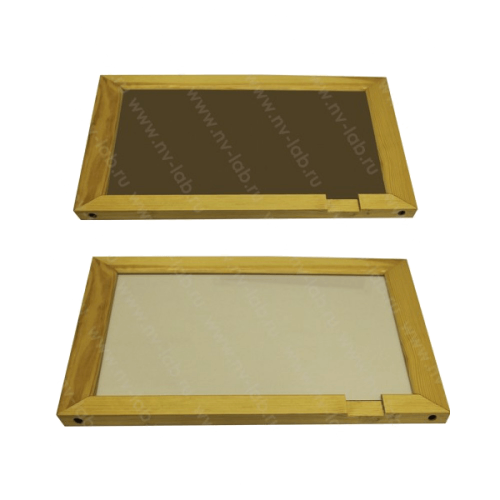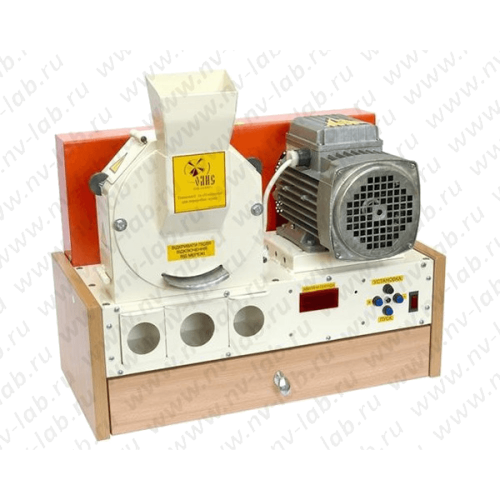Description
Electronic diaphanoscope YANTAR.
Designed to determine the vitreousness of wheat grain by transillumination of the studied grain with a directed light flux. The device implements a method for determining vitreousness in accordance with GOST 10987-76.
PECULIARITIES:
An express method for vitreousness analysis has been implemented – the device allows analysis fifty times faster than it is done on traditional equipment. The analysis time is 2 minutes.
A high degree of ergonomics of the analysis has been achieved – the grains are viewed on the computer screen, which makes the operator’s work easier.
The objectivity of the analysis has been significantly increased – due to the use of a software assessment of vitreousness, the determination error associated with the subjective opinion of the operator has been reduced.
Archiving of the results of determinations and images of the evaluated samples – all the results of determinations of vitreousness with the corresponding images of grains are stored in the archive. If necessary, specialists can print the protocols of the current or any of the previous definitions.
The principle of operation of the electronic diaphanoscope “YANTAR” is to transfer the image of a cassette with grains illuminated by a light flux using a video camera to a personal computer screen, followed by image analysis by physical and mathematical methods using a computer.
The diaphanoscope YANTAR has two versions of the program.
- The program for determining vitreousness using a standard cassette allows you to work in two modes – manual and semi-automatic.
Manual mode completely repeats the method for determining vitreousness according to GOST 10987-76.
When selecting MANUAL MODE, the operator must select all grains that he considers mealy and glassy. If necessary, each grain can be increased. After selecting all the grains, the program algorithm will calculate the vitreousness and display the result in the “Measurement result” window.
ALGORITHM OF WORK IN MANUAL MODE:
Distribute 100 grains into cassette cells
Insert the cassette into the diaphanoscope
- Run the program
Select mode
- Image transfer to PC.A window with 100 grains will open on the screen.
Operator selection of all mealy and vitreous grains
- Mathematical image processing and calculation of computer results.
When SEMI-AUTOMATIC MODE is selected, the operator is prompted to select one vitreous, one partially vitreous, and one mealy.
The selected grains are considered reference.
Based on the selected reference grains, the program will automatically determine the type of each of the 100 grains, calculate the glassiness and display the results of the glassiness determination in the “Measurement result” window.
ALGORITHM OF WORK IN SEMI-AUTOMATIC MODE:
Distribute 100 grains into cassette cells
Insert the cassette into the diaphanoscope
- Run the program
Select mode
- Image transfer to PC.A window with 100 grains will open on the screen.
Choice of reference grains by the operator
- Identification of grains by standards and calculation of computer results.
- Program for determining vitreousness using a cassette without cells
A significant part of the time during the analysis to determine the vitreousness is spent on the distribution of grain in the individual cells of the cassette. We have automated this process by developing a new glassiness program using a cassette without cells.
When choosing a program for determining vitreousness using a cassette without cells, it will be enough for the operator to fill the grains into the cassette and close it with a transparent glass lid. The program will randomly select 100 grains for analysis and after the operator selects three reference grains, it will automatically determine the type of each, calculate the vitreousness and display the result of determining the vitreousness in the “Measurement result” window.
The use of this program in determining vitreousness can significantly reduce the time of analysis.
ALGORITHM OF PROGRAM OPERATION USING A CASSETTE WITHOUT CELLS
Pour the grains into the cassette and close the transparent glass lid.
Insert the cassette into the diaphanoscope
- Run the program
Transfer image to PC
- Program selection of 100 random grains
- Choice of reference grains by the operator.
- Identification of grains by standards and calculation of computer results.
Specifications:
| Light source | LED |
| Interface for communication with a computer | USB 2.0 |
| Power supply, V/Hz | 220/50 |
| Power consumption, W | 20 |
| Overall dimensions (Diameter*Height), mm | 200*400 |
| Weight, kg | 3.7 |





